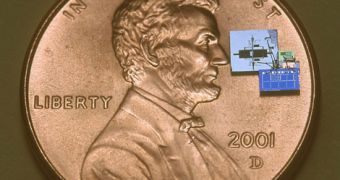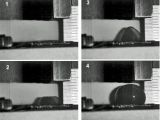Successfully landing micro sensor device on the surface of a planet, during planetary exploration missions, could prove somewhat difficult, especially when trying to deploy them without causing critical failures during the impact phase. Swiss and German researchers from the Swiss Federal Institute of Technology, along with colleagues from the Universite de Neuchatel, believe they have the solution: dropping the compact sensors into the planet's atmosphere and protecting them with the help of miniature airbags during the surface impact.
Motes, or compact sensors, could be equipped relatively easy with explosively inflating balloons, which could provide a cushion as the device hits the surface. The idea is not new at all, in fact NASA has previously used such protection techniques during the landing phase of its twin Martian rovers Spirit and Opportunity, back in 2004.
The task of building the explosive balloons fell in the hands of Danick Briand, from the Universite de Neuchatel, who build the explosive charge out of satellite micro-thrusters that use solid rocket fuel contained into a silicon envelope. While working on the prototype of the airbag, the developing team noticed that gas resulted during the burning of solid rocket fuel could be used to inflate instantaneously a tiny balloon. They quickly created a basic prototype for the device, by creating a silicon container for the explosive charge, covered with a rubber membrane that would act as balloon skin while inflated.
When electrical current is delivered to the propellant, it starts to burn rapidly in order to inflate a balloon only one centimeter in diameter in about a couple of milliseconds. On top of the cushioning properties of the newly designed device, the researching team also noticed its invaluable capability as pneumatic actuator, meaning it could be used to unfold solar panels, or flip sensors, that landed on the wrong side.
The disadvantage of this particular design is the fact that the balloons could only be used once, they could be used anyway due to the low space they occupy in spacecrafts. Miko Elwenspoek, from the University of Twente, who has been working as well at a similar device, says that even though it is extremely similar to the one created by the Swiss and German team, his own prototype uses a rather different type of fuel and is reusable as well. Instead of using rocket propellant, Elwenspoek's mini-balloon expands rapidly by heating a few droplets of ethanol, or any other substance, that produces an explosive inflation when subjected to heat. Soon after the explosive charge has been detonated, the liquid cools and condenses back to its original state, deflating the bubble.

 14 DAY TRIAL //
14 DAY TRIAL // 
